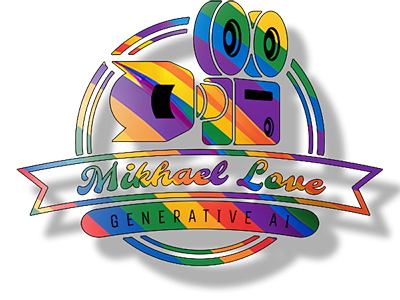The first Gay Pride March happened in Chicago on June 28, 1970 – exactly one year after Stonewall. Pride Month’s power hasn’t diminished with time. Chicago’s Pride Festivals now attract more than a million people consistently since 2013. The celebrations keep growing, but Pride Month means more than just festivities. LGBTQ+ community members still face tough challenges daily. Studies show lesbian, gay, and bisexual adults are more than twice as likely to experience mental health conditions compared to heterosexual adults. On top of that, transgender people face mental health issues almost four times more often than cisgender individuals.
The Origins of Pride Month
Pride Month started as a bold stand against systematic oppression. Several LGBTQ+ protests took place across America before the Stonewall uprising, but they didn’t get much historical attention. The Pepper Hill Club Raid (1955), Cooper’s Do-Nut Raid (1959), and Compton’s Cafeteria Raid (1966) were among these early protests1.
Stonewall stood out because of the community’s unprecedented response. The police raid at the Mafia-run Stonewall Inn on June 28, 1969 met resistance from patrons for the first time. The crowd outside grew angry as they watched officers roughly handle people under arrest2. What started with people throwing pennies and bottles quickly turned into a major confrontation. Hundreds of protesters set the bar on fire while police took shelter inside3.
The clash lasted five more days and united the LGBTQ+ community like never before. New organizations and newspapers sprang up within weeks2. The most important development came when activists planned the first anniversary march for June 28, 19704.
This first march, named the Christopher Street Liberation Day March, brought a fundamental change in strategy. Early activists had preferred conservative dress codes and calm behavior during protests. The new generation chose to be visible and proud5. The organizers thought about using “gay power” as their slogan but ended up choosing “gay pride”6. Marchers chanted “Say it clear, say it loud. Gay is good, gay is proud”7.
Similar events happened at the same time in Chicago, Los Angeles, and San Francisco7, starting what would become a yearly tradition. The celebration grew from a single day to include the whole month of June7.
Government recognition came years later. President Clinton first declared June as “Gay and Lesbian Pride Month” in 1999. President Obama later expanded it to “LGBT Pride Month,” and President Biden broadened it further to “LGBTQ+ Pride Month”7.
How Pride Month Evolved Over the Decades
Small protest marches in 1970 grew into massive worldwide celebrations that now span months. Those early parades showed raw political defiance. Participants boldly kissed in public and carried signs that declared their sexual orientation while chanting “Gay power,” “Gay is okay,” and “Gay, gay, all the way!”8
Pride events spread rapidly throughout America and beyond borders during the 1970s. London joined the movement by July 1972, timing their events to mark Stonewall’s third anniversary9. The terminology evolved alongside Pride itself. New York and Atlanta called it “Gay Liberation Day,” while Los Angeles and San Francisco used “Gay Freedom Day.” A fundamental change happened in the 1980s as activists “of a less radical nature” took charge of march committees and introduced the term “Gay Pride”9.
The AIDS epidemic brought devastating changes to LGBTQ communities in the 1980s. Nearly 700,000 people have died of AIDS in the U.S. since the epidemic began10. This crisis sparked new activism, notably with ACT UP’s (AIDS Coalition to Free Power) formation in 1987. They hosted focused demonstrations that pushed for action on AIDS research and treatment11.
AIDS activism altered Pride’s very nature. “The whole ordeal of surviving the AIDS epidemic brought people of differing identities together: lesbian, gay, bisexual, and transgender individuals formed what we know today as the LGBTQ community”12. This unity made the movement stronger.
Mainstream acceptance grew in the 1990s. President Clinton made June “Gay and Lesbian Pride Month” in 1999, and President Obama later broadened it to “LGBT Pride Month” in 20091314. The numbers kept growing – New York’s 2019 World Pride event drew about five million people8.
Pride celebrations now happen on every continent, with millions of people taking part in more than one hundred countries each year15. The rainbow flag first appeared in June 1978 and remains Pride’s most recognized symbol. It has evolved to better represent transgender people and people of color15.
Pride in 2025: Why It Still Matters
Pride Month in 2025 remains a vital concern despite years of progress. Recent data shows a troubling surge in anti-LGBTQ+ legislation throughout the United States. States have advanced unprecedented numbers of bills that target transgender people and restrict local protections16. These political moves negatively affect mental health—more than half of LGBTQ+ adults say recent debates about restrictive state laws have substantially affected their mental wellbeing17.
Discrimination goes beyond just laws. LGBTQ+ people face bias at much higher rates than others in healthcare, employment, and housing17. The situation becomes even more concerning if you are transgender or nonbinary. Data shows 86% of these individuals say recent anti-LGBTQ+ state laws have affected their mental health or reduced their sense of safety17.
Access to mental healthcare presents another major hurdle. About 40% of LGBTQ+ respondents—including 57% of transgender and nonbinary individuals—wanted therapy in the last year but couldn’t afford it17. This creates a serious health crisis since LGBTQ+ adults receive depression diagnoses twice as often as cisgender/straight adults18.
All the same, positive changes are happening. Schools that teach inclusive curriculum report reduced hostility and stronger connections among LGBTQ+ students19. Research shows that comprehensive sex education helps all youth, and schools with these programs see improved overall climate20.
Allyship plays a crucial role in this movement. Allies advance LGBTQ+ equality by sharing advocacy responsibilities and using their privilege to support the community21. The National LGBTQ+ Bar Association states, “When non-LGBTQ+ people see straight and cisgender people advocating for the LGBTQ+ community, others will recognize that LGBTQ+ rights are something that we all should care about”21.
Pride Month matters today because it highlights our ongoing fight for equality and acceptance. Many states still treat Pride as primarily a protest—drawing attention to, commemorating, and fighting for LGBTQ+ people’s rights22.
Conclusion
Pride Month celebrates our progress and reminds us of the work to be done. The six days at Stonewall sparked remarkable changes, yet the experience toward full equality still continues. Without doubt, Pride has grown from small, defiant marches to worldwide celebrations that millions attend, but its core purpose stays the same. The rainbow flag flies high as a symbol of resilience and hope.
LGBTQ+ individuals still face most important challenges, even after decades of progress. The surge in anti-transgender legislation and ongoing discrimination in healthcare, employment, and housing shows why Pride matters just as much today. Mental health data reveals a troubling reality – LGBTQ+ adults are twice as likely to experience depression compared to their cisgender, heterosexual peers. Many can’t access affordable therapy.
All the same, hope shines through. Educational programs that promote inclusivity show promising outcomes. Allies play a vital part in moving equality forward. Pride Month is evidence of our journey since 1969, while showing us how far we still need to go.
Pride Month teaches us that being seen matters. A rebellion against oppression has grown into a global movement that celebrates authenticity and just needs justice. Pride will always be vital – it’s a bold statement that everyone should have dignity, respect, and freedom to be themselves.
FAQs
Q1. Why is Pride Month celebrated in June? Pride Month is celebrated in June to commemorate the Stonewall Riots of 1969, a pivotal moment in LGBTQ+ history. The first Pride marches took place on June 28, 1970, exactly one year after the riots began, and June has since become a month-long celebration of LGBTQ+ pride, visibility, and rights.
Q2. How has Pride Month evolved since its inception? Pride Month has transformed from small, defiant marches in the 1970s to massive worldwide celebrations. It has expanded globally, with events now held in over 100 countries. The focus has broadened from gay rights to include the entire LGBTQ+ spectrum, and the celebrations have gained mainstream recognition and support from governments and corporations.
Q3. What challenges does the LGBTQ+ community still face today? Despite progress, the LGBTQ+ community continues to face discrimination in healthcare, employment, and housing. There’s been a rise in anti-LGBTQ+ legislation, particularly targeting transgender individuals. Mental health issues are prevalent, with LGBTQ+ adults being more than twice as likely to experience depression compared to their cisgender, heterosexual counterparts.
Q4. How can allies support the LGBTQ+ community during Pride Month and beyond? Allies can support the LGBTQ+ community by educating themselves about LGBTQ+ issues, speaking out against discrimination, supporting LGBTQ+-owned businesses, and participating in Pride events. They can use their privilege to amplify LGBTQ+ voices and advocate for inclusive policies in their workplaces and communities.
Q5. What is the significance of the rainbow flag in Pride celebrations? The rainbow flag, first flown in June 1978, has become the most recognized symbol of Pride. It represents the diversity and unity of the LGBTQ+ community. Over time, the flag has evolved to become more inclusive, with newer versions incorporating colors to represent transgender individuals and people of color within the LGBTQ+ community.
References
[1] – https://guides.loc.gov/lgbtq-studies/before-stonewall
[2] – https://www.american.edu/sis/news/20190618-the-legacy-of-the-stonewall-riots.cfm
[3] – https://www.history.com/articles/the-stonewall-riots
[4] – https://www.pbs.org/wgbh/americanexperience/features/stonewall-milestones-american-gay-rights-movement/
[5] – https://en.wikipedia.org/wiki/List_of_LGBTQ_actions_in_the_United_States_prior_to_the_Stonewall_riots
[6] – https://www.history.com/articles/pride-month
[7] – https://www.britannica.com/story/why-is-pride-month-celebrated-in-june
[8] – https://www.nationalgeographic.com/history/article/inside-the-first-pride-parade-a-raucous-protest-for-gay-liberation-lgbtq
[9] – https://en.wikipedia.org/wiki/Pride_parade
[10] – https://www.nbcnews.com/feature/nbc-out/lgbtq-history-month-early-days-america-s-aids-crisis-n919701
[11] – https://www.aclu.org/podcast/how-act-up-changed-the-face-of-aids-and-activism
[12] – https://www.sfcenter.org/history/looking-back-the-aids-epidemic/
[13] – https://en.wikipedia.org/wiki/Pride_(LGBTQ_culture)
[14] – https://bigsea.co/ideas/history-of-pride-month-marketing/
[15] – https://www.cfr.org/article/how-lgbtq-pride-went-global
[16] – https://www.aclu.org/legislative-attacks-on-lgbtq-rights-2025
[17] – https://www.americanprogress.org/article/discrimination-and-barriers-to-well-being-the-state-of-the-lgbtqi-community-in-2022/
[18] – https://www.hrc.org/resources/mental-health-resources-in-the-lgbtq-community
[19] – https://www.glsen.org/sites/default/files/2019-11/GLSEN_LGBTQ_Inclusive_Curriculum_Resource_2019_0.pdf
[20] – https://www.apa.org/topics/lgbtq/lgbtq-inclusive-curricula
[21] – https://lgbtqbar.org/programs/allies/
[22] – https://www.amnesty.org/en/what-we-do/discrimination/lgbti-rights/

